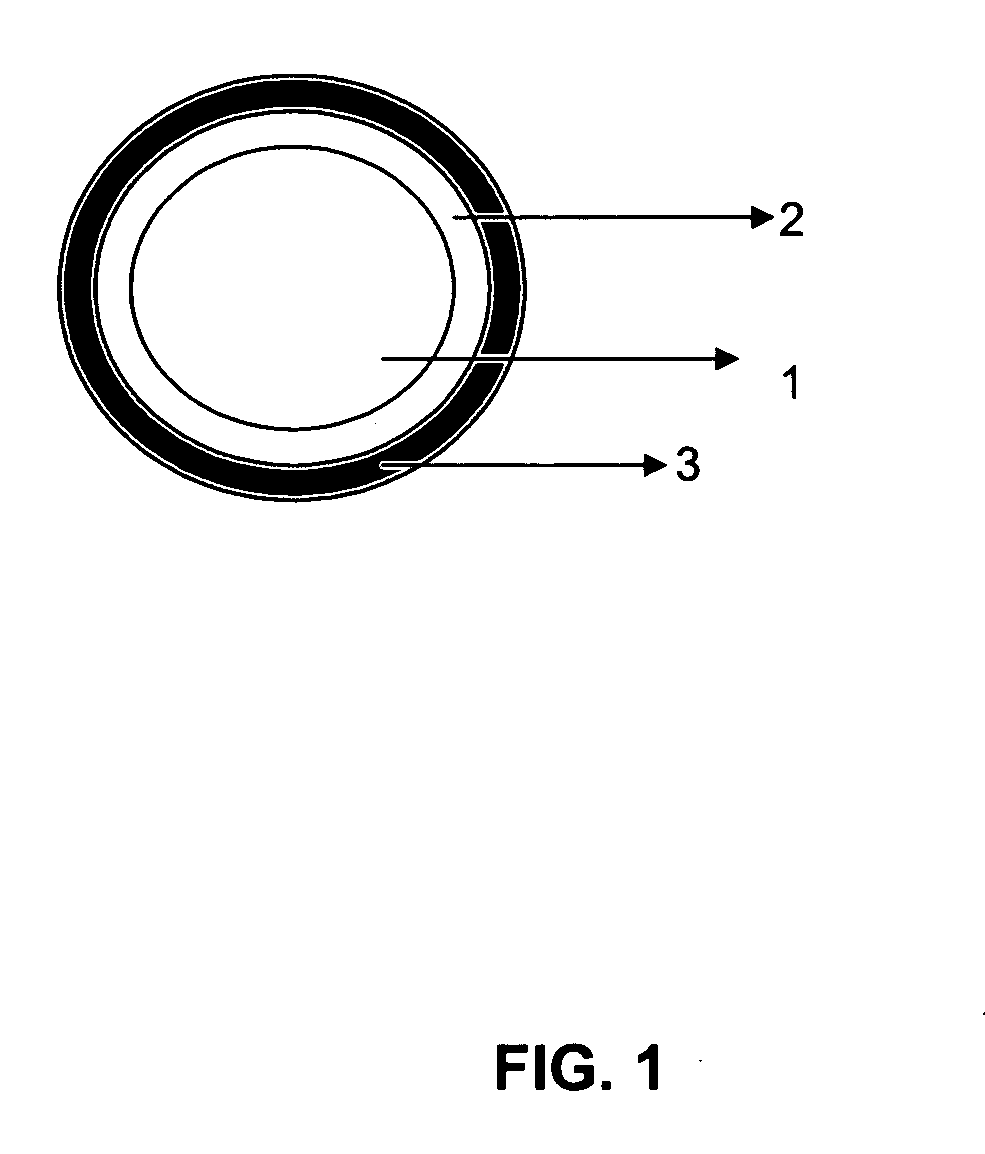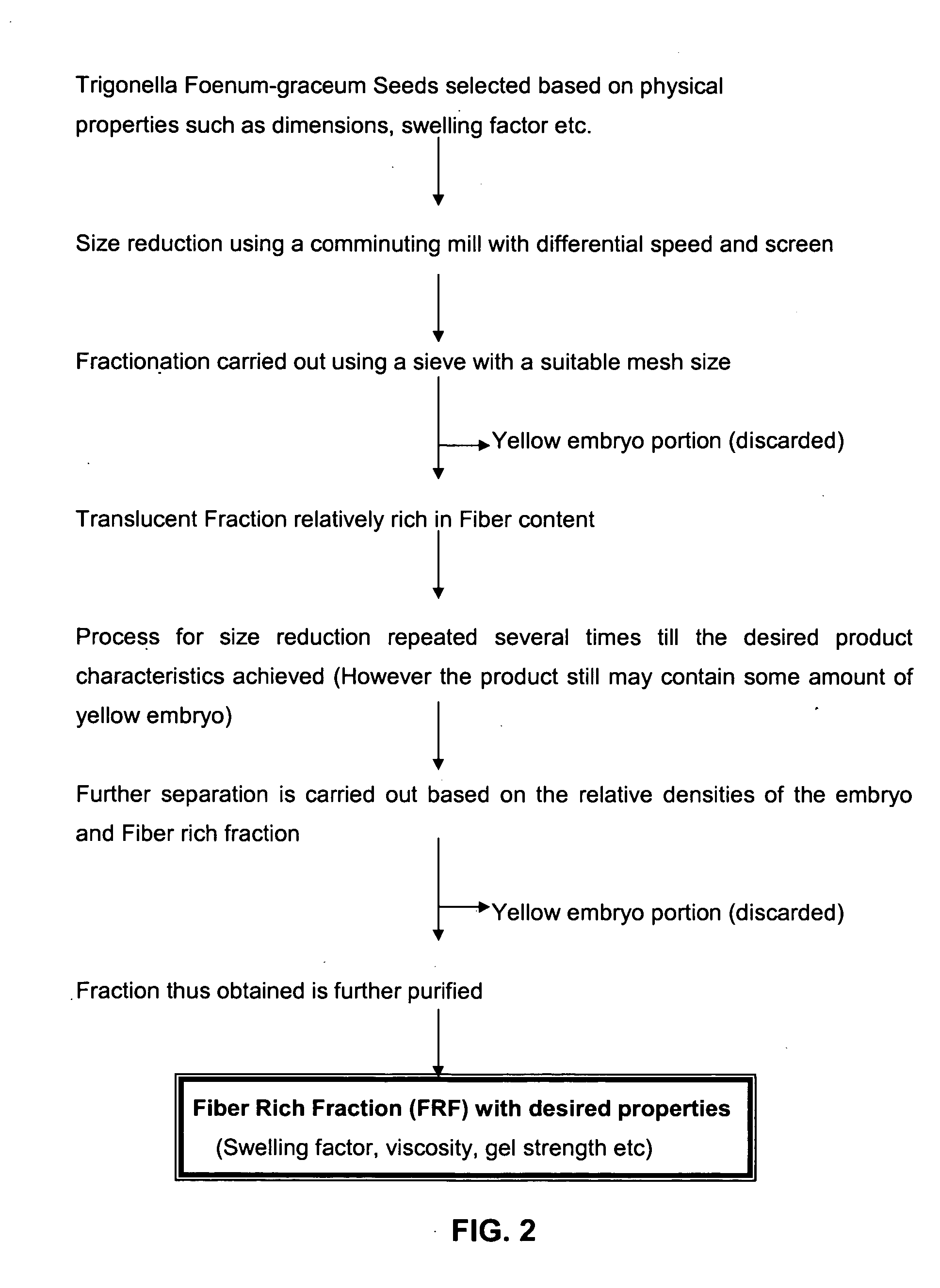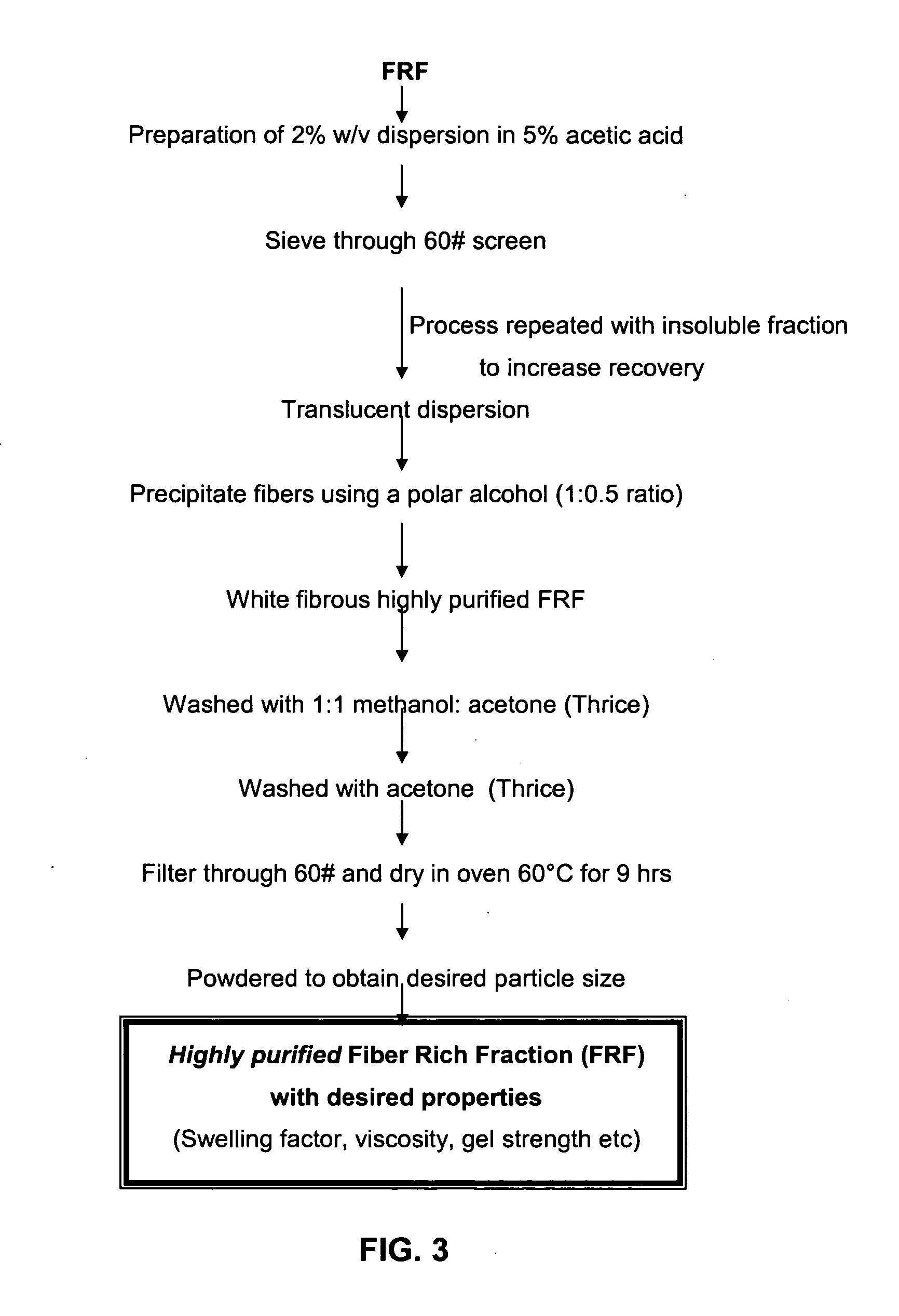Fiber rich fraction of Trigonella Foenum-graceum seeds and its use as a pharmaceutical excipient
a technology of trigonella foenumgraceum and fiber, which is applied in the directions of biocide, plant ingredients, pharmaceutical non-active ingredients, etc., can solve the problems of increasing the extraction process time, discoloration of the final product, and time-consuming isolation process, and achieves cost-effectiveness and simple
- Summary
- Abstract
- Description
- Claims
- Application Information
AI Technical Summary
Benefits of technology
Problems solved by technology
Method used
Image
Examples
example 1
Isolation of FRF from Fenugreek seeds
[0105] 5 Kg Fenugreek seeds were purchased from a local source (Mumbai, India). Seeds were introduced into the multimill with a 4 mm sieve and hammer forward operating at fast speed. The material was collected at the end of the first run and passed through a 16# sieve. The under fraction was removed and the fraction retained was again passed through the multimill. The process was repeated for at least 5 more times and yellow embryo content in the mixture was determined by physically separating the two fractions. The embryo content of the fraction was found to be about 54%, which suggested a need to further continue passage through multimill. After another 6 passage through multimill and subsequent sieving through 16# sieve a fraction with only 17% of yellow embryo fraction was reached. This fraction (˜1.5 Kg) was then separated by fluidization and sifting through 12# to give fiber rich fraction (˜900 gms).
example 2
Enrichment of Fiber Rich Fraction Content by the Process of the Invention
[0106] 5 Kg Fenugreek seeds were purchased from a local source (Mumbai, India). Seeds were introduced into the multimill with a 5 mm sieve and hammer forward operating at fast speed. The material was collected at the end of the first run and passed through a 16# sieve. The fraction retained on the sieve was evaluated for the embryo content and Fiber rich fraction content. Similar fractions were also collected after 4, 8 and 12 runs. Finally the Fiber rich fraction was obtained after fluidization and sifting through 12# sieve. The Fiber rich fraction content and the viscosities of these fractions and the isolated FRF were determined.
TABLE 4Husk content and viscosity achieved after the enrichment processAfterAfterAfterAfter1st run4th run8th run12th runFRFHusk content (%) 3% 15% 40% 60% >90%Viscosity* in cps1000048000
2% w / v solution using Brookfield viscometer.
[0107] This data suggests that serial and c...
example 3
Characterization of FRF
[0108] Characterization of FRF isolated from two different samples of Fenugreek seeds by a process indicated in example 1 is as follows:
TABLE 5Characterization of FRFNo.TestSample ISample II1Moisture content6.464.25(AOAC 17th edition 2000, 925.10)2Total ash3.053.5(AOAC 17th edition 2000, 923.03)3Fat1.530.92(AOAC 17th edition 2000, 984.13)4Protein (N × 6.25)3.958.93(AOAC 17th edition 2000, 920.85)5Dietary fibers(AOAC 17th edition 2000, 991.43)Insoluble dietary fiber (ISDF)40.3033.62Soluble dietary fiber (SDF)38.0025.22ISDF / SDF1.061.336Viscosity at 2% w / v15000 cps20000 cpsUsing Brookfield viscometer
[0109] The data suggests low protein content as well as high content of dietary fibers with a ratio of insoluble dietary fiber to soluble dietary fiber being greater than 1.0 and a high viscosity suggesting suitability of the isolated FRF as a pharmaceutical excipient.
PUM
| Property | Measurement | Unit |
|---|---|---|
| insoluble | aaaaa | aaaaa |
| swelling factor | aaaaa | aaaaa |
| length | aaaaa | aaaaa |
Abstract
Description
Claims
Application Information
 Login to View More
Login to View More - R&D
- Intellectual Property
- Life Sciences
- Materials
- Tech Scout
- Unparalleled Data Quality
- Higher Quality Content
- 60% Fewer Hallucinations
Browse by: Latest US Patents, China's latest patents, Technical Efficacy Thesaurus, Application Domain, Technology Topic, Popular Technical Reports.
© 2025 PatSnap. All rights reserved.Legal|Privacy policy|Modern Slavery Act Transparency Statement|Sitemap|About US| Contact US: help@patsnap.com



